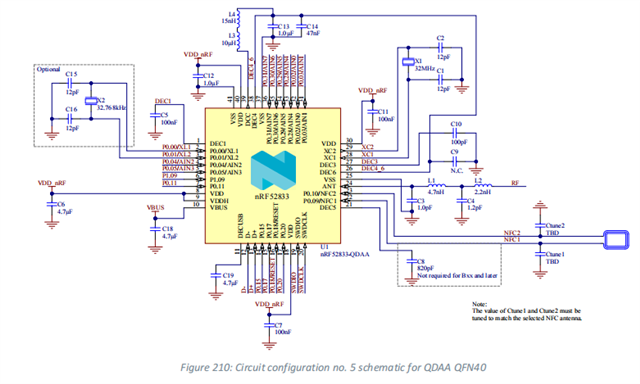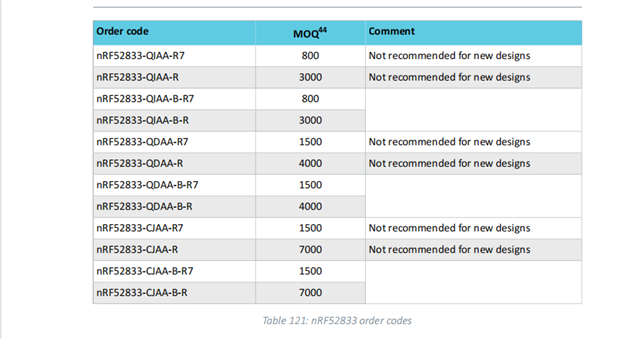Hello team,
We are currently working on a project that used nRF52833-QDAA-B as the MCU chipset. We have followed the circuit configuration 5 for our test case. Our SoC is not getting detected when we have used this configuration. Whereas, when tried the same with nRF52833-QDAA-R/ nRF52833-QDAA-R7( same number of pins, package) the chipset is being detected and we are able to build & flash the code. Kindly specify why this occurs and how to rectify this.
Also specify is we can work with nRF52833-QDAA-R and build our entire project. If not what are the complications if used.



